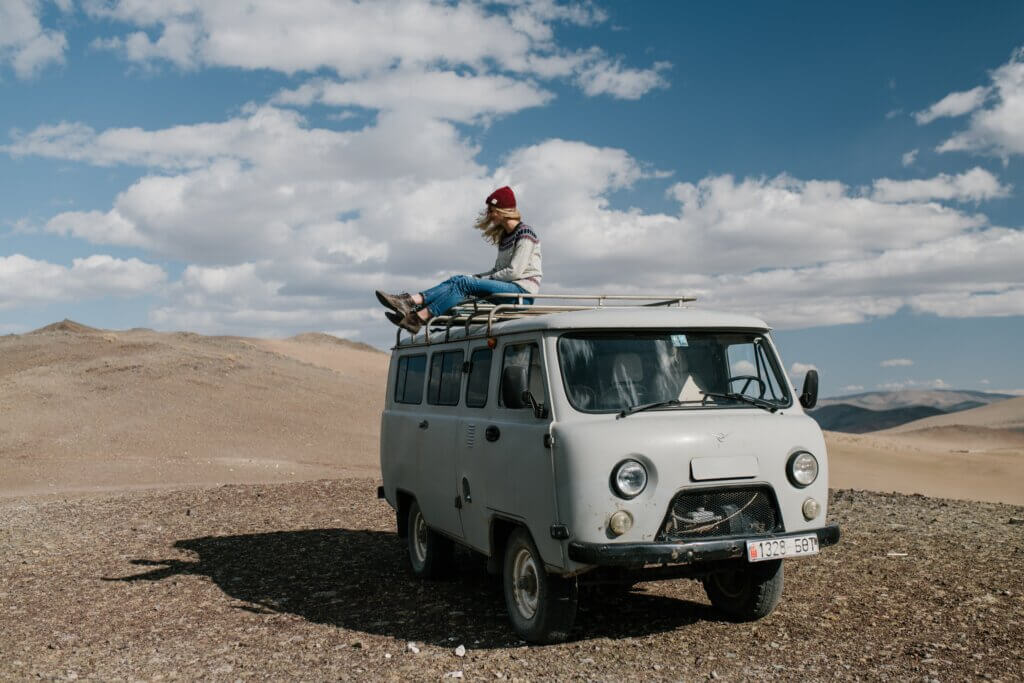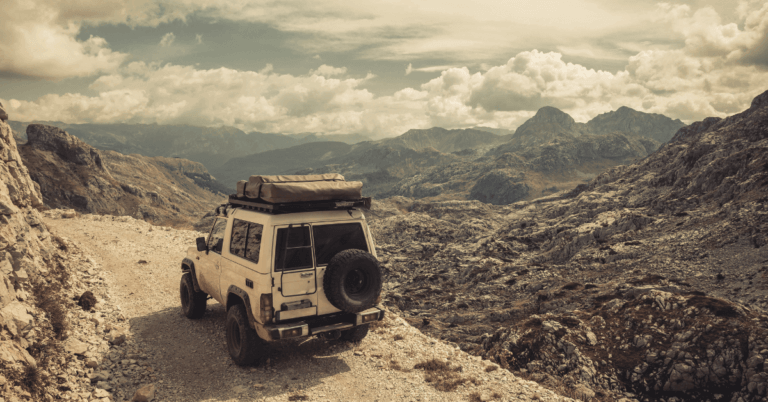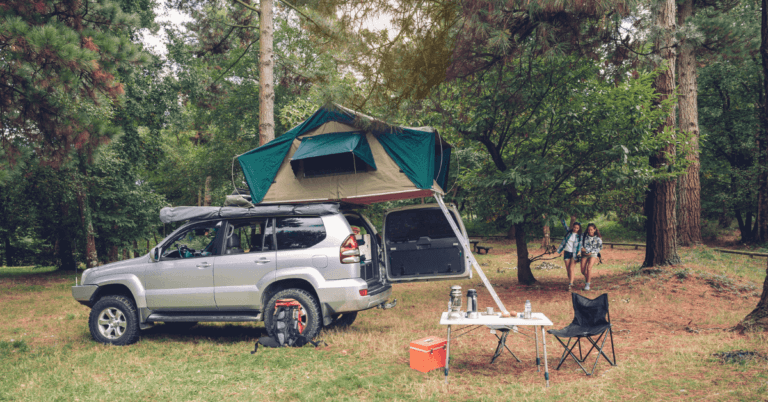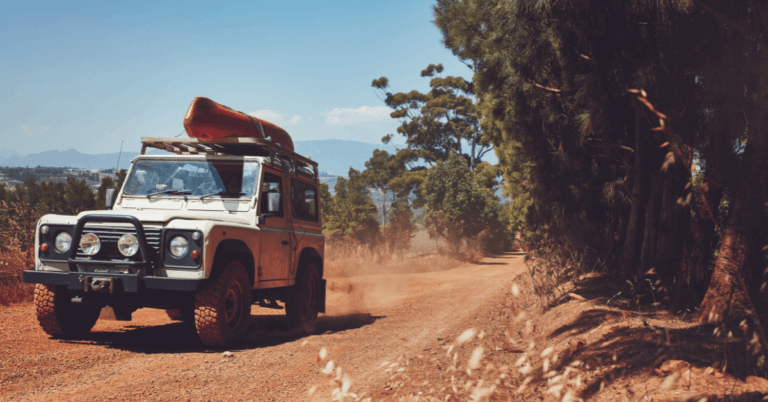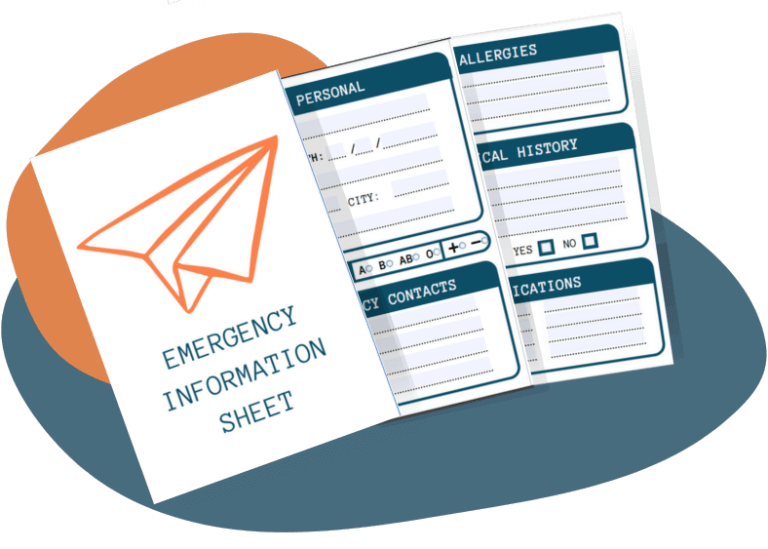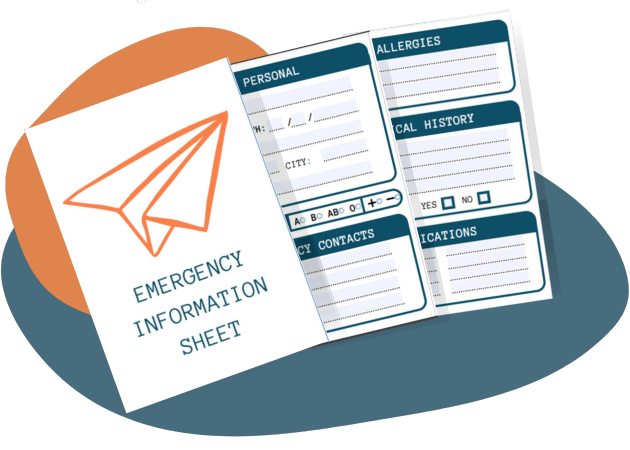You decided you want to go overlanding, but don’t know what vehicle will suit your overlanding needs?
An overland vehicle doesn’t only serve as a means to an end, it becomes part of your expedition family, and in some ways, it might even shape your adventures.
⎯⎯ So, the decision on what vehicle to choose can be a pretty hefty one ⎯⎯
Don’t worry, we got you!
Here’s how to pick the perfect overland vehicle in 4 easy steps:
TYPE
You’ll want a rigid, easy-to-maintain, and reliable vehicle. Ideally, it’s easy to adjust, and will still run smooth as butter even when it’s heavily loaded.
Since you’ll probably spend most of your time in remote areas, where you’ll be exposed to the elements, it’s important your vehicle can take quite the beating.
Therefore, most people will opt for a four-wheel drive vehicle. It’s factory-made with a heavier suspension, higher ground clearance, and better protection against the elements of the unpaved road.
You could use a regular car or van, but even with an adventurous spirit, there will be roads you just won’t be able to access.
So, if you have the budget for it, a four-wheel drive will save you a lot of headaches on (and off) the road.
LICENSE
The second thing to consider is what driver’s license you’ll need.
Smaller rigs (<3500kg total mass) require a “regular” license, but if you want to drive a bigger vehicle (>3500kg total mass), like a Unimog or a big MAN truck, you’ll need to get a truck driving license.
So, car → standard car driving license, truck → truck driving license, EASY!
⎯ Well, it’s not really that black and white ⎯
Vans are kind of in the grey area. And that’s because of the Gross Vehicle Weight Rating (GVWR). This number is determined by the vehicle’s manufacturer and reflects the total amount of weight your vehicle is allowed to carry.
Is the GVWR of your van higher than 3.5 tons?
Then you’ll need a truck license to drive it, even if your total vehicle’s weight (GVW) stays under that limit.

The license you’ll need is determined by what your vehicle CAN carry, rather than what IS carrying at that moment.
Remember to always check the GVWR of your vehicle before you choose it, because going over it cannot only be dangerous, you might also be fined for it, and if you were to get into an accident, your insurance probably won’t cover you.
SIZE
The ideal size of your vehicle depends on how many people will be traveling in it and what level of comfort you want.
Small 4×4
Are you a solo traveler and okay with a minimalistic way of living?
A smaller 4×4 vehicle like a Lada Niva or Suzuki Jimny might be just the thing for you. These cars are lightweight, which will help save money on gas, and their small size will enable you to drive on narrow forest roads and mountain passes.
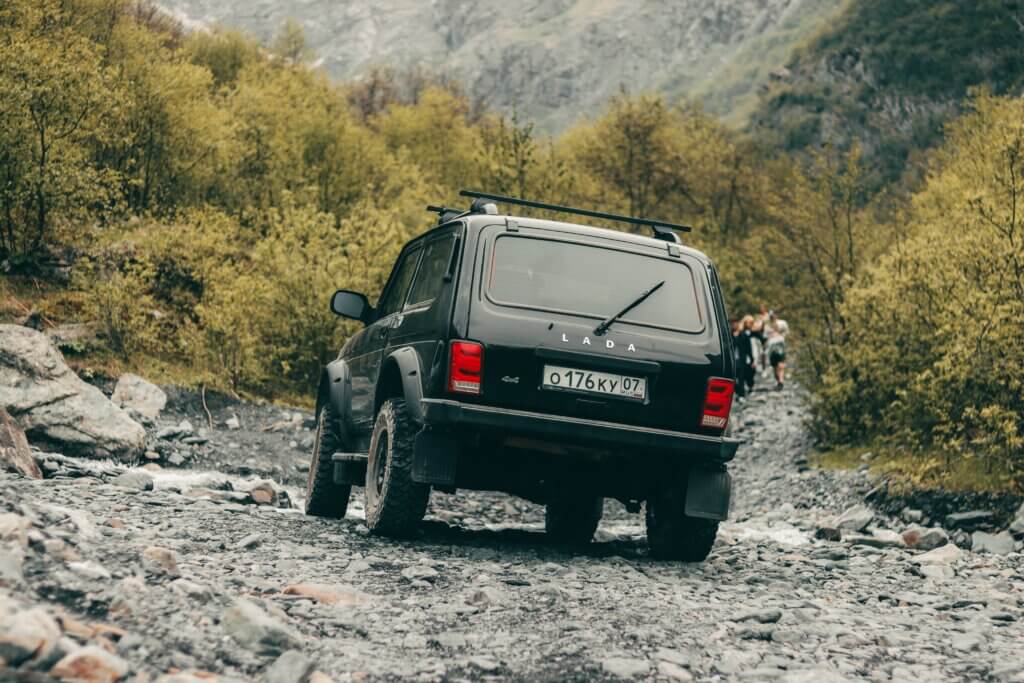
Mid-sized 4×4
Traveling as a duo or in need of some extra storage space? A middle-sized 4×4 vehicle, like a Land Rover Defender or a Toyota Land Cruiser, might be a better option for you.
They are still small enough to pass most forest roads and mountain passes, but things might get tricky when accessing very narrow roads like you might find in medieval European villages.
Mid-sized 4x4s have a higher payload, and since they are more spacious, this generally makes them more comfortable to travel with.
You might even be able to fit four people in some of them, though things can get a bit tight.
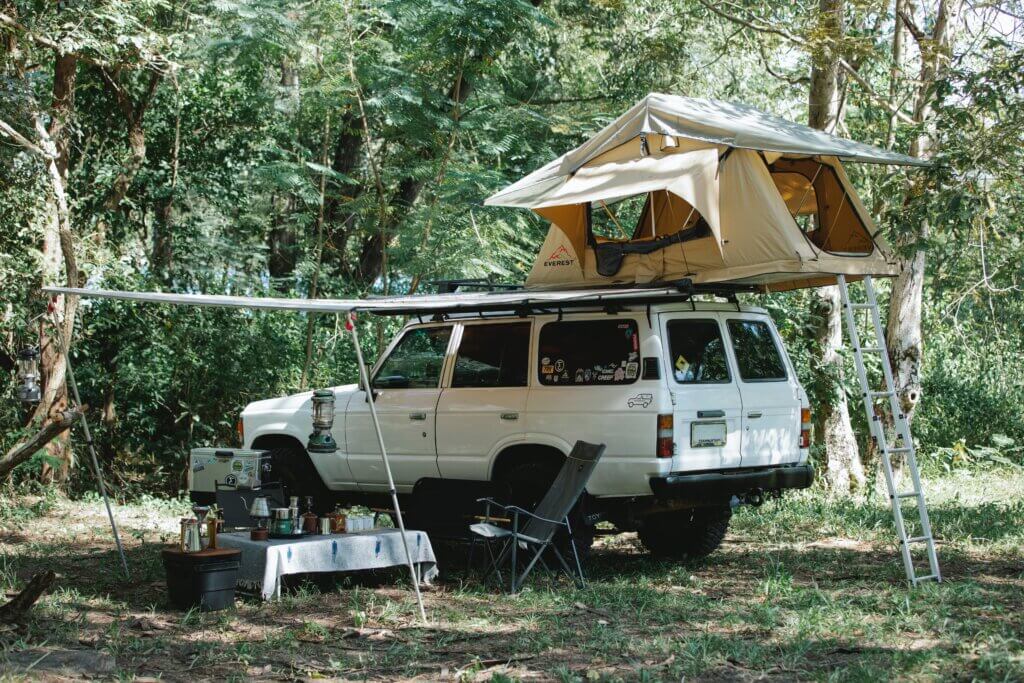
Van
Traveling with more than two people or looking for more living space? You might want to invest in a van, like a Mercedes Sprinter or an Iveco Daily.
Vans have a high payload, which might go up to 5.5 tons. The extra space a van offers is ideal for people who plan on living inside their overland rigs.
You can add a fixed bed, a kitchen set-up with an indoor seating area, and maybe even a bathroom. This can be especially beneficial if you intend to travel to places where the weather can be bad. This way, you won’t need to cook in the rain or shower outside in the cold.
But the larger size does have its downsides. Vans are pricier, will consume more fuel, might require a truck license, and might have trouble traveling through small passes and roads.
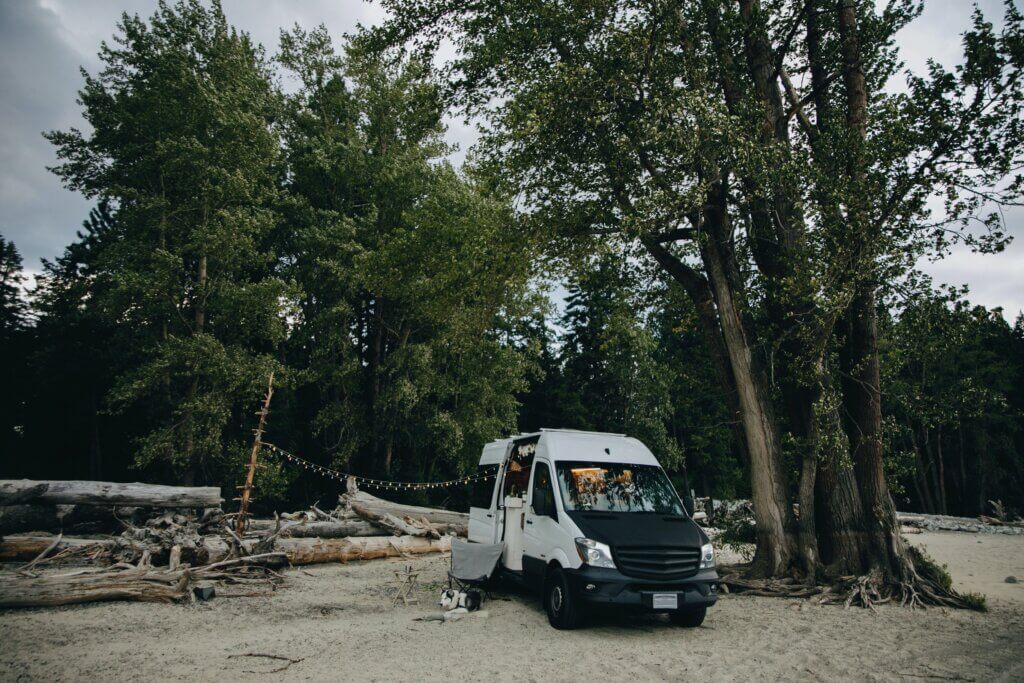
Expedition truck
Want to go all out? A literal home-on-wheels can be found in expedition trucks and adapted buses. These rigs are enormous, and might even provide space for up to 8 people. You can easily live in them full-time since they offer all the comfort an apartment would. Some of them even have a washing machine!
Mostly suited to drive on open planes, their off-road capabilities might be limited when driving through forests and deserted mountain regions.
Small villages and city centers are a no-go with a truck this size.
However, most of them will offer enough spare space to store a few bikes. You could even add a platform to it so you can take your motorbike or ATV with you. This way, you’ll still be able to explore your surroundings.
Aside from needing a special license, and the limited agility, the biggest downside to this type of vehicle, is its cost. The high purchase price along with the exorbitantly high fuel consumption, makes this an overland rig most travelers can only dream of.
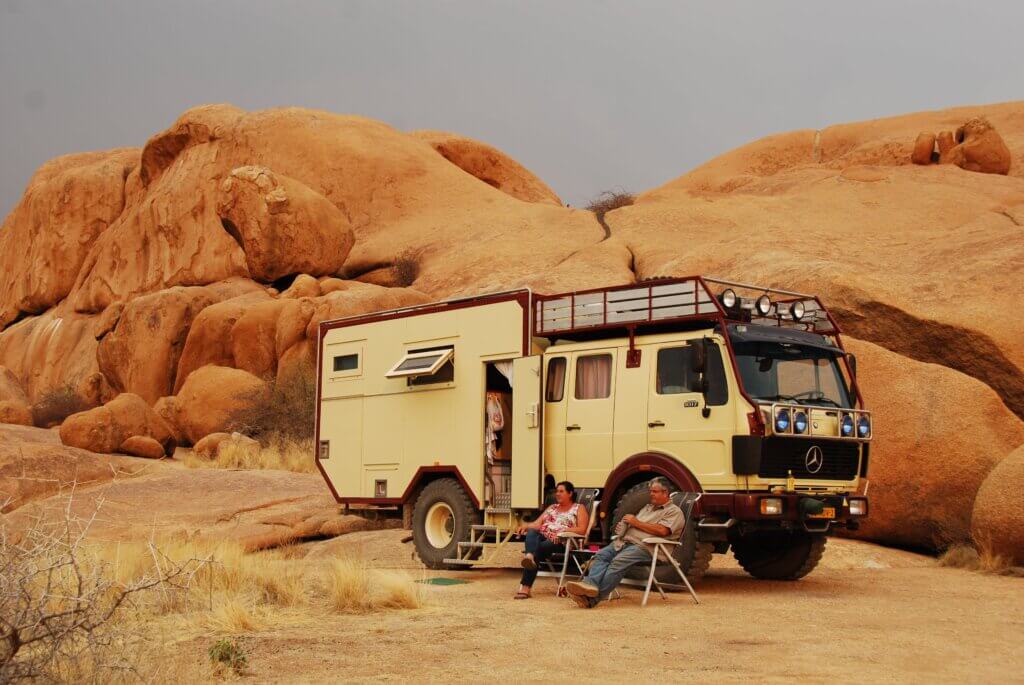
BUDGET
Vehicle
The total price of your overland vehicle will depend on many factors, like the type, size, and whether you buy it brand new or second-hand.
In Europe, a decent secondhand (middle class) 4×4 car will be €10.000-€15.000, and a new one can go up to €100,000.
Vans tend to be pricier than mid-sized 4x4s on the secondhand market. This is mainly due to the increased demand following the rise of #vanlife. However, this difference in price range becomes negligible when you compare the price of both vehicles when you buy them brand new.
When it comes to buying a new vehicle for overlanding, trucks are the most expensive. However, due to the higher fuel consumption and the need for a truck license, they aren’t as popular as vans or cars, so you might get lucky and find a deal on the secondhand market.
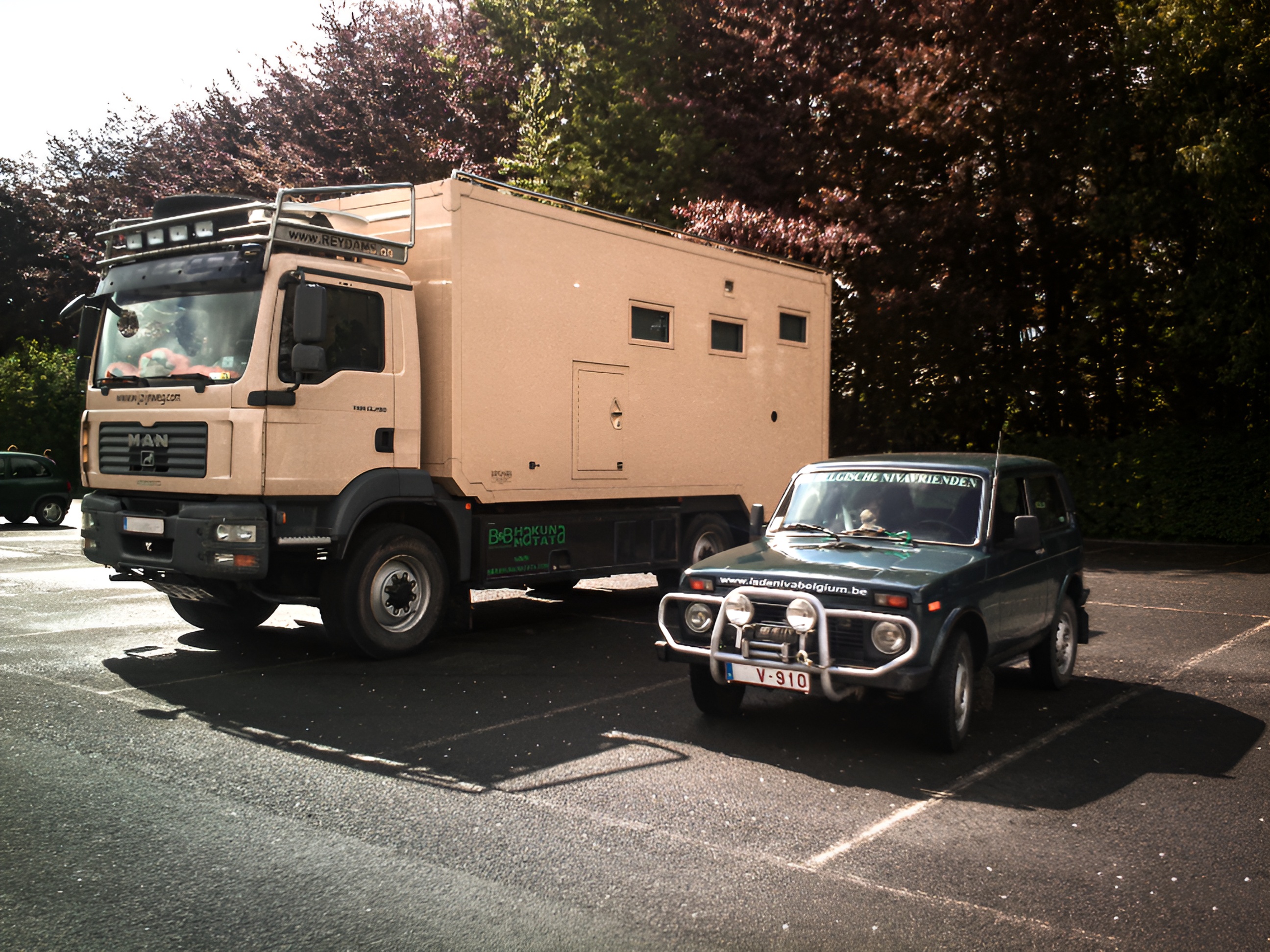
Camper Conversion
Along with the type of vehicle you choose, the next determining factor for the price will be whether you choose to buy a vehicle that’s already been converted into a camper.
Buying a ready-made camper will be more expensive than going the “DIY” route, but it will save you a lot of hassle and time. There’s a serious price tag that comes with that convenience though.
For example, a ready-made Land Rover camper will likely set you back more than €100.000, where the price of an expedition-ready truck from companies like Unicat, can go up to 7-digit numbers.
Since this is way beyond most overlanders’ budget, most choose to buy a “blank canvas” and build their own camper. How you choose to convert your vehicle into a camper, is up to your personal preference. One might only need the bare minimum, while the other will want the latest high-tech gear and luxury.
The price of the DIY camper builds varies heavily. Some conversions might start as low as €1000.
A quality conversion on average, will set you back around €5.000-€8.000. This budget includes a separate electricity system, water tanks, sleeping arrangements, kitchen set-up, recovery items, and furniture/storage space.
The advantage of doing your own camper build is that you’re in full control of what you want to invest in, and what, for you personally, can wait. There are options for everyone’s budget.
Remember that a DIY build is a dynamic project, and it doesn’t have to be “perfect” before you’re able to hit the road.
CONCLUSION
So, what vehicle should you choose? There really isn’t one cookie-cutter overlanding rig that is perfect for everyone.
Of course, there are some objective things to consider, like your license and your budget, but most of the decision comes down to personal preference. And that’s the beauty of it.
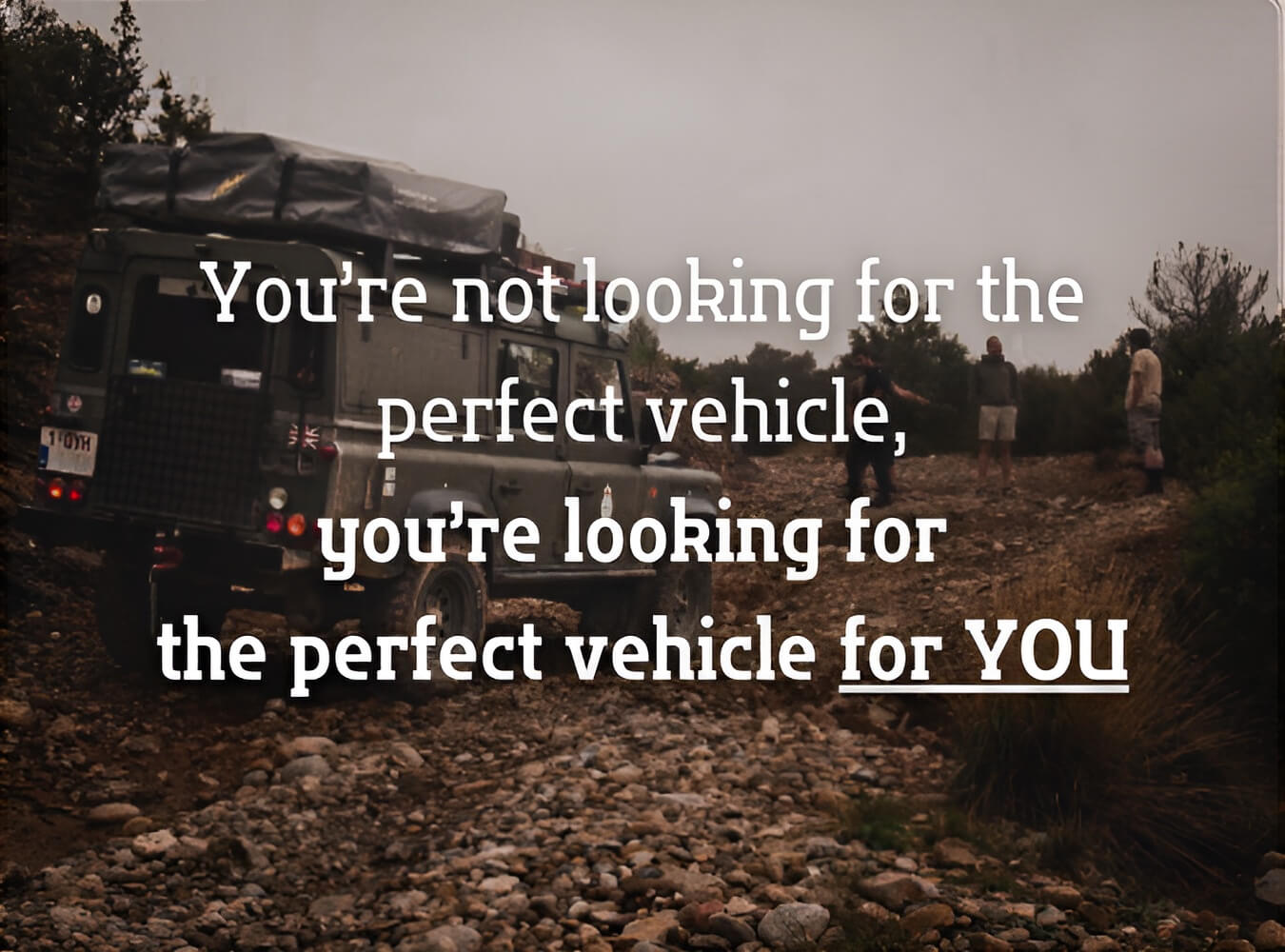
Every vehicle is as unique as the overlander driving it. While it might be quite a quest, once you find, you won’t want to trade it for anything, unless maybe a pimped-out expedition truck.
– Hey, an overlander can dream, right? 🙂 ⎯


